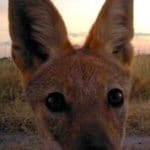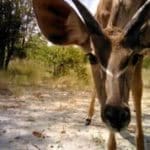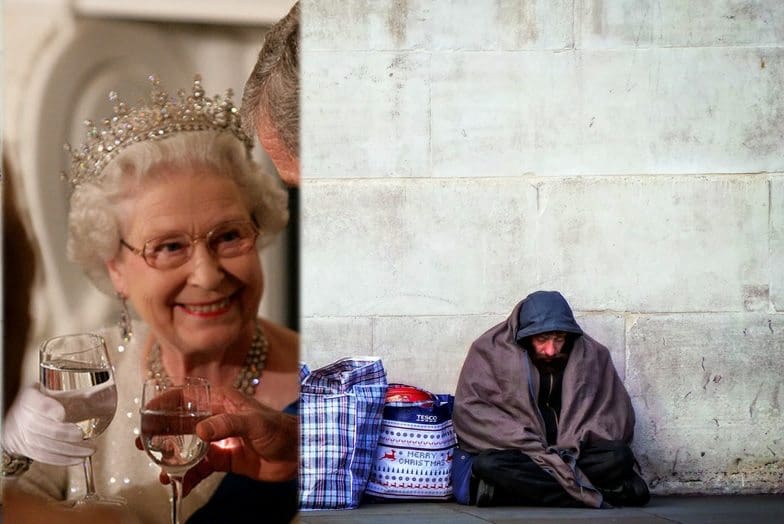Using 221 camera traps in areas of differing human impact in Botswana, ecologist Lindsey Rich captured candid images of 44 different species of mammal over 5 months. Working with a local rural school, Rich enabled children to see and learn more about the wildlife local to their region. Her research will help inform local wildlife authorities on conservation issues and emphasizes the importance of protected areas and grasslands in southern Africa.
Lindsey Rich of Virginia Tech worked with the Botswana Predator Conservation Trust on the research, and published her results in the Journal of Applied Ecology.
Botswana’s rich and diverse wildlife is a national icon. Chobe National Park for example is well-known for having the greatest wildlife concentration in Africa. Most big safari animals can be seen in the country, although rhinos have only recently been reintroduced following their decimation by the illegal wildlife trade. In 2015, the country hosted a gathering of experts to discuss the action required to end the illegal wildlife trade.
So it’s no surprise that conservation is a big focus in Botswana. Rich’s research will be used to find out how human activity and environmental variables affect wildlife in the region. Her work will also help wildlife authorities in Botswana to target their conservation work more precisely.
The areas studied in the research were diverse; they included a game reserve and a livestock grazing area.
More than 30,000 images were captured using 221 remote camera traps. Results demonstrated how camera traps and hierarchical modelling can be used to assess entire terrestrial wildlife communities which should reduce funding, time and personnel costs, when compared to single species approaches.
Results also showed the importance of protected areas and grasslands in protecting biodiversity. Species richness was greatest in floodplains, grasslands, and in protected areas. Very large species over 200kg benefited most from living in protected areas.
Rich’s work will provide important data for the Botswana government, but has also already had an impact on the local school children that she worked with. Says Lindsey:
Enabling children to have positive experiences with wildlife will help build a conservation ethic among Botswana’s younger generation.
The camera traps recorded 44 different species of mammal over five months. Among the candid snapshots is this spotted hyena carrying a midnight snack – a Cape buffalo leg, which was probably scavenged from a lion kill:
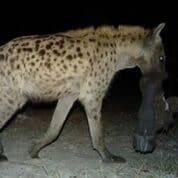
A porcupine family of two adults and their porcupette, out for an evening stroll::
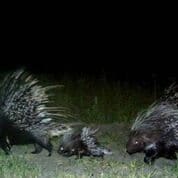
And a pride of lions, which spent more than 10 minutes biting and pawing another camera trap attached to the opposite fence post:
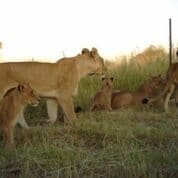
Remote camera traps use motion- and heat-sensing infrared technology to detect passing animals. They collect information 24 hours a day, seven days a week, in all weathers without the need for a human to be present. They have become increasingly popular thanks to better and more affordable technology.
There are a growing number of camera trap studies worldwide. This useful technology can help ecologists measure the success of conservation programs and enable younger generations to have positive experiences with wildlife to help build conservation ethic. For Botswana, the technology serves as part of a wider toolkit in the country’s conservation effort and fight against the illegal wildlife trade.
Featured image via Flickr / Ross Huggett
Materials provided by British Ecological Society (BES) (edited for length and clarity). Full journal reference: Lindsey N. Rich et al. Using camera trapping and hierarchical occupancy modelling to evaluate the spatial ecology of an African mammal community. Journal of Applied Ecology, 2016; DOI: 10.1111/1365-2664.12650

